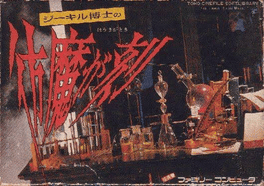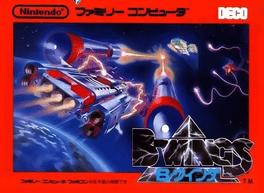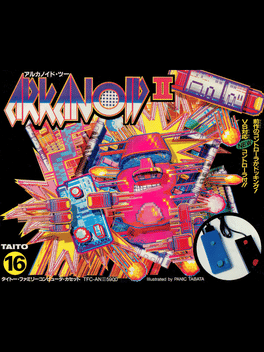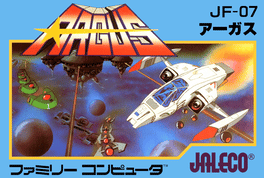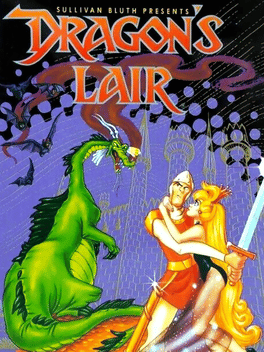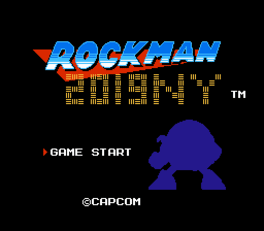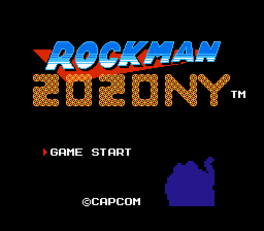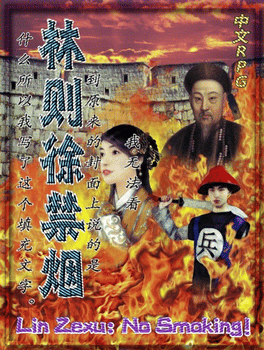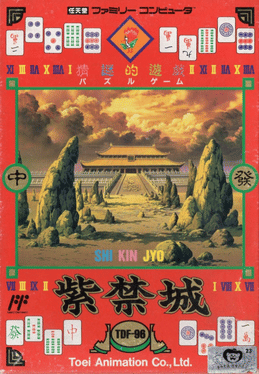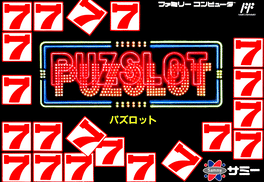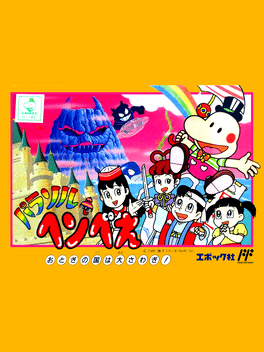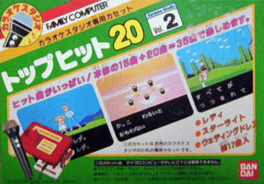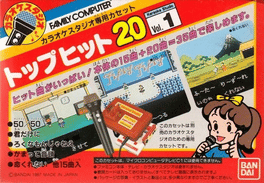Most Popular Family Computer Games - Page 13
-
Jekyll Hakase no Houma ga Toki
1988
The original Famicom version of the game known in the West as Dr. Jekyll and Mr. Hyde. The original version has a different stage order when compared to the international version, and it is also more difficult. -
Ballblazer
1988
-
B-Wings
1986
-
Arkanoid II
1988
Arkanoid II
1988
Eons have passed... yet despite apparent annihilation in the original ARKANOID game, Dimension-controlling force DOH has come back to life, and occupying the huge spacecraft ZARG, has entered our universe. ARKANOID-type spacefighter MIXTEC runs through long forgotten computer data until it finds the answer to this threat... VAUS 2 is launched and speeds towards the threatening alien presence, before it can extract its revenge... "Arkanoid II"! Unlike the original game, the sequel was released only in Japan. -
Argus
1986
Argus
1986
Argus is a vertical shooter by Jaleco and conversion of an arcade game originally released in 1986. The players takes control of a space-fighter equipped with a front laser gun and ground bombs. Although the game features power-ups, they follow an unusual and unique formula - tiles on the ground must be destroyed in order to upgrade the main weapon or trigger special events. However, three of these tiles must be destroyed to activate such power-ups - B creates a temporary barrier around the ship,P upgrades the primary weapon and L gives the player an extra bonus at the end of each stage. Another interesting twist to the game is the Uoru armor; a shadow sometimes appear on the ground and if the player aligns his own shadow with it, then the ship transforms into a powerful robot for a short amount of time. Each stage ends with the same boss battle; a large Mega Argus fortress with a slow flashing core at its center, and the only way to destroy this pernicious mothership is to bomb its core when it is fully exposed. A -
A-Ressha de Ikou
1991
-
Dragon's Lair
1991
Dragon's Lair
1991
The Japanese version of NES Dragon's Lair had a major overhaul in quality, being the fastest version of the game. It also has changes in level design to make the bosses less easier to be cheated. -
Lines
1998
Lines
1998
Lines is an unlicensed Russian port of an IBM match-five game called Color Lines for the NES. -
Space Hunter
1986
Space Hunter
1986
Space Hunter is a Japan-exclusive video game that was released in 1986 for the Family Computer. The game was published by Kemco; which was then known as Kotobuki System. The plot apparently revolves around a robotic revolt led by a robot named De Gaulle. It is the year 2199 AD. By the explosions of global nuclear war, society has broken up into nine small expulsions, one of them disappeared and Venus collided with another celestial object. Humanity only slightly survived. Its thread of life barely connected to a body; which was rebuilt into a cyborg. The heroine is named Al Tiana and is also apparently a robot who does not support the rebellion. She is out to prove her loyalty to the humans. -
Lin Zexu: No Smoking
1996
Lin Zexu: No Smoking
1996
Lin Zexu: No Smoking is an Action Role-Playing game, developed by Fuzhou Waixing Computer Science & Technology, (a chinese gaming company known for making unlicensed Famicom games and other electronics), in 1996. The game was translated to English by pacnsacdave in 2017. -
Shikinjou
1991
Shikinjou
1991
Shikinjou, or Shikinjoh, is a puzzle game inspired by Mahjong Solitaire and Sokoban. Like most Mahjong Solitaire variants, it takes its name from a region in China: in this case, the former Imperial Palace of China, also known as The Forbidden City. The goal of the game is to get the protagonist, who is a jiang shi by default, to the exit. To do this they must push mahjong tiles out of the way. Most mahjong tiles will disappear once they touch one or more of the same type, and these tiles will also vanish along with it. Some, like the dragon or wind tiles, are barricades that will transform any tile that comes into contact into another barricade. The player can also switch graphical modes, which changes all the tiles, the protagonist, and even the background and UI. These graphical modes include alternative themes like space, medieval knights, and Japanese ninja (with shogi tiles replacing the mahjong tiles). -
Puzslot
1992
-
Parasol Henbee
1991
Parasol Henbee
1991
This game is based on the Anime series of the same name and was released only in Japan for the Nintendo Famicom. Not to be confused with the Game Boy title of the same name. -
Super Rugby
1989
Super Rugby
1989
Super Rugby is a rugby game released for the Famicom by ZAP and TSS. Though it shares its name with the Super Rugby international rugby union, the latter was formed years after this game's release so the name is coincidental. It is also not to be confused with the 1994 Super Famicom game Super Rugby. The game uses a top-down perspective of the pitch with the two sides oriented vertically, and the player is able to assign points to various stats before playing a match to focus on certain areas of their playstyle. Options include a one-off "Training" exhibition match, a "League" game which pits the player against several CPU teams, and a "Vs." mode for two human players to compete. -
Karaoke Studio Senyou Cassette Vol. 2
1988
Karaoke Studio Senyou Cassette Top Hit 20 Vol. 2 is the second add-on for the Karaoke video game Karaoke Studio, featuring twenty additional songs. It cannot be played without the original cartridge and microphone peripheral. All the game modes themselves remain unchanged. -
Karaoke Studio Senyou Cassette Vol. 1
1987
Karaoke Studio Senyou Cassette Top Hit 20 Vol. 1 is the first add-on for the Karaoke video game Karaoke Studio, featuring twenty additional songs. It cannot be played without the original cartridge and microphone peripheral. All the game modes themselves remain unchanged.

